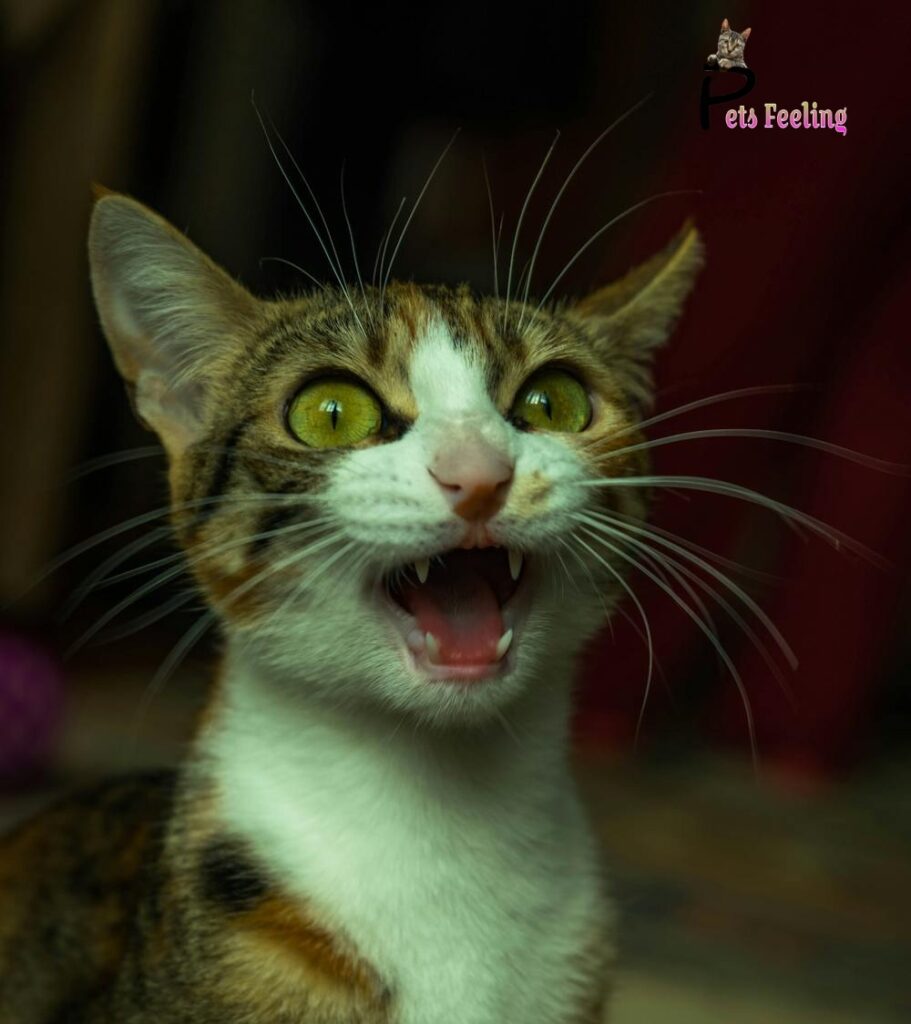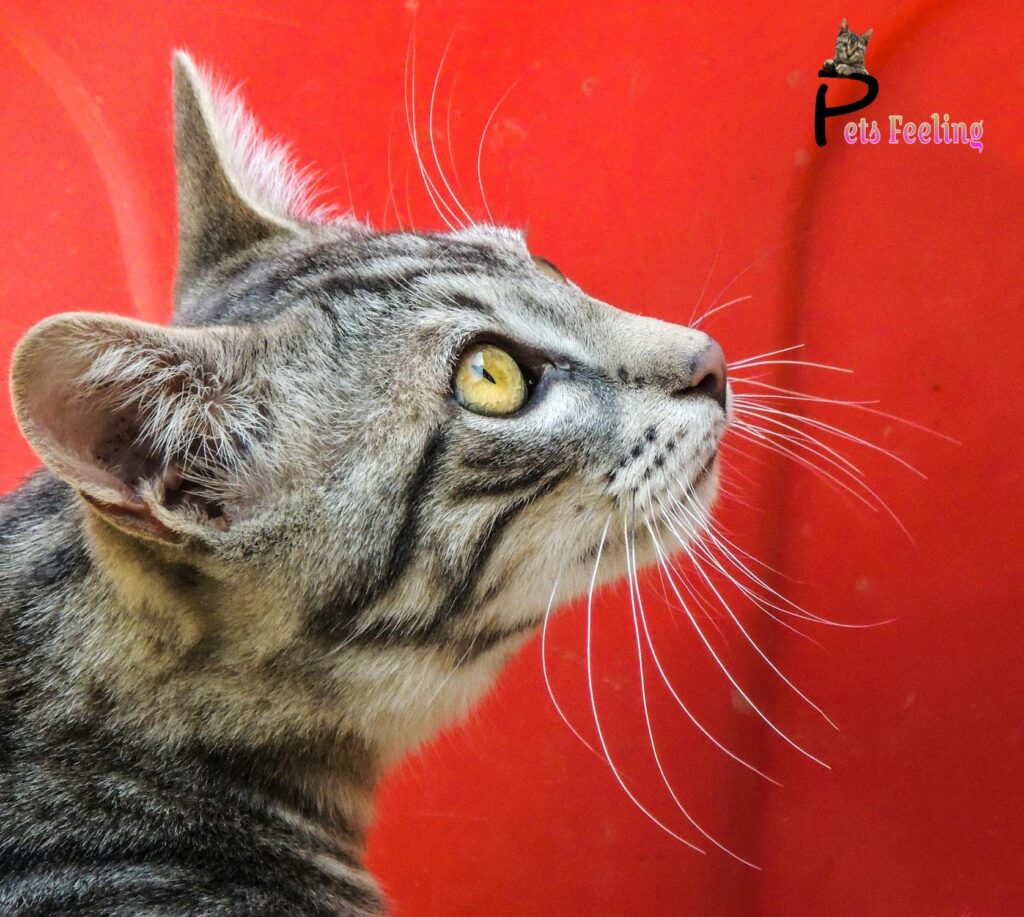How to Tell Play from Aggression in Cat Behavior .
As devoted cat owners, we often wish to understand our feline companions’ behaviour better. It’s important to know the difference between playful antics and aggressive tendencies. This knowledge is crucial for a harmonious home environment.
In this article, we’ll explore the essential steps to recognise the difference between play and aggression in cat behaviour. This will empower us to address any underlying issues. It will also help us foster a healthier, more enriching relationship with our beloved pets.
Do you ever wonder if your cat’s playful swatting is simply a harmless game or a sign of deeper aggression? Deciphering feline body language and understanding the root causes of aggressive behaviour are key. These skills are essential to ensure the safety and wellbeing of both you and your cat.
By mastering these critical skills, we can build stronger bonds. We can prevent potential conflicts and create a stress-free home for our furry friends to thrive.

Key Takeaways
- Recognise the difference between playful and aggressive cat behaviour
- Understand the underlying causes of feline aggression, such as fear, anxiety, or territorial disputes
- Identify common signs of aggression, including tense body language, dilated pupils, and redirected attacks
- Establish clear boundaries and create a stress-free environment to manage aggressive tendencies
- Seek professional guidance from a veterinary behaviourist if necessary to address severe or persistent aggression
Understanding Feline Body Language
Watching and understanding your cat’s body language is key to knowing if they’re playing or being aggressive. By paying attention to the small signs they give, we can learn a lot about their feelings and what they want.
Identifying Signs of Aggression
Cats showing aggression often look different. They might stand stiff, have big pupils, ears back, and a tail that swishes or lashes. These signs can happen for many reasons, like inter-cat aggression, fear aggression, or petting-induced aggression.
Recognising Playful Behaviour
On the other hand, playful cats seem more relaxed and bouncy. They have round pupils and an upright, shaking tail. This play aggression is a normal part of a cat’s life and social play, and it’s not real anger.
| Aggressive Behaviour | Playful Behaviour |
|---|---|
| Stiff, upright posture | Relaxed, bouncy demeanour |
| Dilated pupils | Rounded pupils |
| Flattened ears | Upright, quivering tail |
| Swishing or lashing tail | – |
Learning about feline body language helps us understand our cats better. It lets us know what they’re feeling and how to keep them safe and happy.

Aggression in Cat: Causes and Triggers
It’s important to know why cats get aggressive. Things like cat territoriality, fear aggression in cats, redirected aggression in cats, stress-related aggression in cats, and intercat aggression can make cats act out. These factors can cause our cats to behave aggressively.
Cats often get aggressive to protect their territory. They see their home, food, water, and where they sleep as their territory. This can lead to fights with other cats, both at home and outside.
Fear aggression is another reason for cat aggression. Cats may become scared or threatened. This can happen due to a bad experience or feeling unsafe. They might get aggressive towards people or other animals.
Redirected aggression happens when a cat can’t show its anger to the real cause. Instead, they might attack someone else, like a family member or their owner.
Stress is also a big reason for stress-related aggression in cats. Changes at home, new people or pets, or stressful situations can make cats aggressive. They try to deal with their anxiety by acting out.
Lastly, intercat aggression occurs when cats in a household don’t get along. This can happen when new cats join the family. They fight over who’s in charge.
By figuring out what makes our cats aggressive, we can find ways to stop it. This helps create a calm and peaceful home for our cats.
Distinguishing Play from Predatory Behaviour
It’s important to know the difference between play and aggression in cats. Kittens often act like they’re hunting, but this is normal. It’s not usually a sign of trouble.
Kitten Play versus Aggression
Kittens are full of energy and love to explore. They might pounce, bat, or even bite. But this is different from true aggression.
Playful kittens have a relaxed look, with a wiggly tail and soft claws. Their bites are gentle. They also play together, taking turns. Aggressive cats, on the other hand, act alone and get more intense fast.
| Characteristic | Playful Behaviour | Aggressive Behaviour |
|---|---|---|
| Body Language | Relaxed, wiggly tail | Stiff, tense posture |
| Claw Usage | Retracted, gentle swats | Unsheathed, forceful strikes |
| Biting | Gentle, playful nips | Persistent, painful bites |
| Interaction | Mutual, turn-taking | One-sided, escalating |
By noticing these small differences, we can tell if a kitten is just playing or showing aggression. This helps us guide them in a healthy way.
Managing Aggressive Tendencies
Dealing with aggressive cats is a delicate task. But, with the right approach, we can help them overcome their aggression. The key is to set clear boundaries and create a stress-free space that meets their needs.
Establishing Boundaries
To stop cat bites and scratches, setting firm boundaries is crucial. Teach your cat what behaviours are okay, like using scratching posts or play areas. Positive rewards for good behaviour can help socialise aggressive cats and encourage better actions.
Creating a Stress-Free Environment
Cats do best in calm, predictable places. By tackling the reasons behind their aggression, like fear or anxiety, we can make a peaceful space. This means giving them lots of toys, playtime, and making sure their basic needs are met.
Managing aggressive cat behaviour takes patience, consistency, and understanding of cats. By addressing the causes of aggression, we can help our pets thrive. This way, they can have better relationships with their human family.
Conclusion
It’s key to tell the difference between playful and aggressive cat behaviour to keep our homes peaceful. Knowing how cats show their feelings and why they might get aggressive helps us. We can then use this knowledge to help our cats feel better and enjoy our company more.
Understanding aggression in cats and feline behaviour is vital for a stress-free home. This way, our cats can live their best lives. By using what we’ve learned, we can manage our cats’ aggression and live in harmony with them.
As we learn more about cat behaviour, we can give our cats the care they need. This knowledge helps us build a strong bond with our cats. It’s based on trust, respect, and a love for the amazing world of cats.

FAQ
What are the common signs of aggressive behaviour in cats?
Aggressive cats show stiff postures and dilated pupils. They also have flattened ears and a swishing tail. They might growl, hiss, or swat at others.
How can we distinguish between playful and aggressive behaviour in cats?
Playful cats are relaxed and bouncy, with rounded pupils and an upright tail. Aggressive cats are stiff, with dilated pupils and a swishing tail.
What are the common triggers for aggressive behaviour in cats?
Territorial disputes, fear, stress, and redirected aggression can cause aggression in cats. Knowing what triggers it is key to managing their behaviour.
How can we differentiate between play aggression and predatory behaviour in kittens?
Kitten play is natural and usually harmless. It involves hunting and aggressive actions. But, it’s important to tell the difference between playful and aggressive behaviour.
What strategies can we use to manage aggressive behaviour in cats?
Setting clear boundaries and creating a stress-free environment helps. Providing enrichment and positive reinforcement training also works. Sometimes, a vet behaviourist’s help is needed.
IMPORTANT ADDITIONS
Edited on , SEPTEMBER 24,2024
read more articles : https://petsfeeling.com/blog-2/
social media :
facebook : https://www.facebook.com/PetsFeeling0/
tiktok : https://www.tiktok.com/@pets.feeling
instagram : https://www.instagram.com/pets._.feeling/
youtube : https://www.youtube.com/@Pets-Feeling

